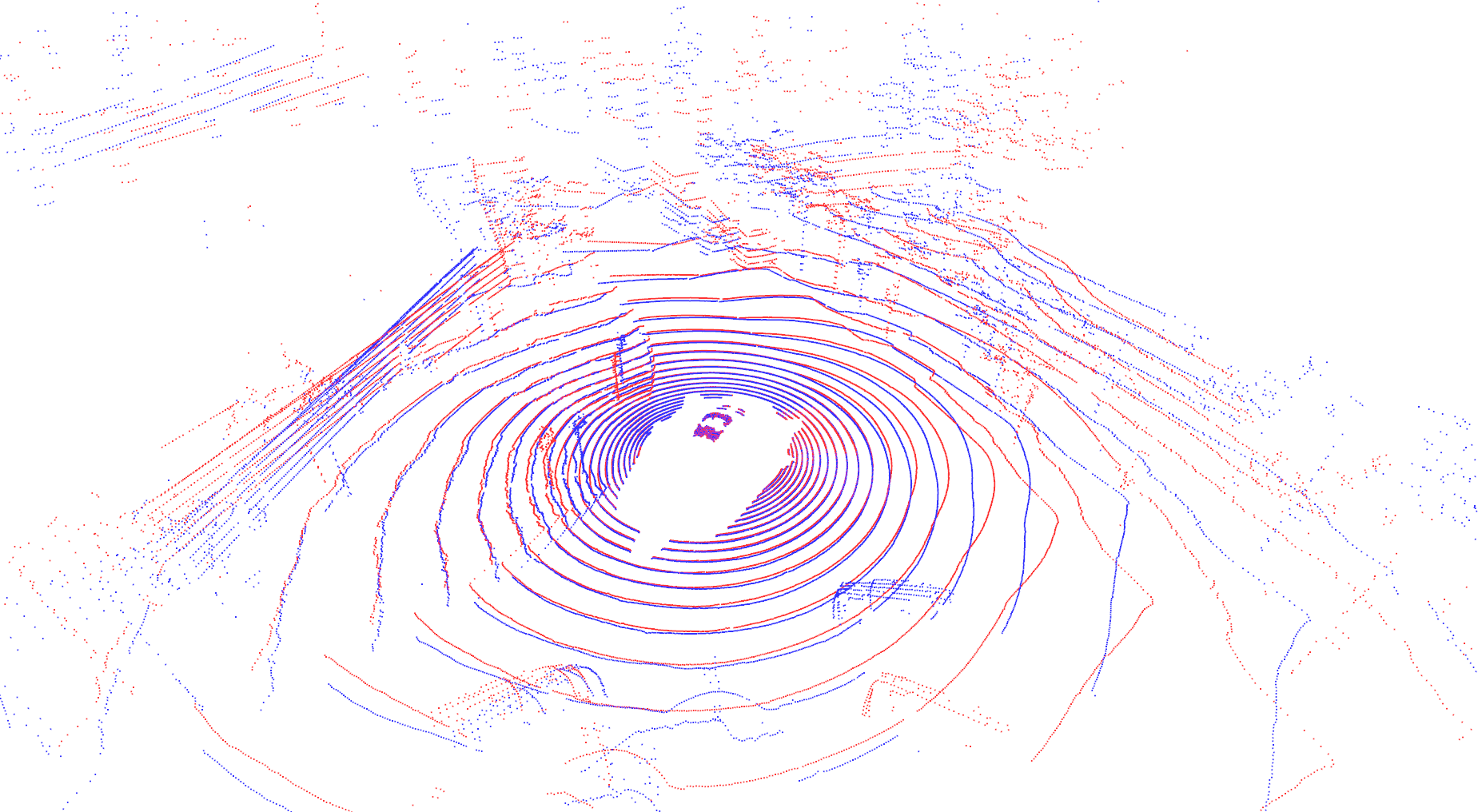paper | preprint | code | video
The official implementation of KCP: K-Closest Points and Maximum Clique Pruning for Efficient and Effective 3D Laser Scan Matching, accepted for publication in the IEEE Robotics and Automation Letters (RA-L).

KCP is an efficient and effective local point cloud registration approach targeting for real-world 3D LiDAR scan matching problem. A simple (and naive) understanding is: ICP iteratively considers the closest point of each source point, but KCP considers the k closest points of each source point in the beginning, and outlier correspondences are mainly rejected by the maximum clique pruning method. KCP is written in C++ and we also support Python binding of KCP (pykcp).
For more, please refer to our paper:
- Yu-Kai Lin, Wen-Chieh Lin, Chieh-Chih Wang, K-Closest Points and Maximum Clique Pruning for Efficient and Effective 3-D Laser Scan Matching. IEEE Robotics and Automation Letters (RA-L), vol.7, no. 2, pp. 1471 – 1477, Apr. 2022. (paper) (preprint) (code) (video)
If you use this project in your research, please cite:
and if you find this project helpful or interesting, please ⭐Star the repository. Thank you!